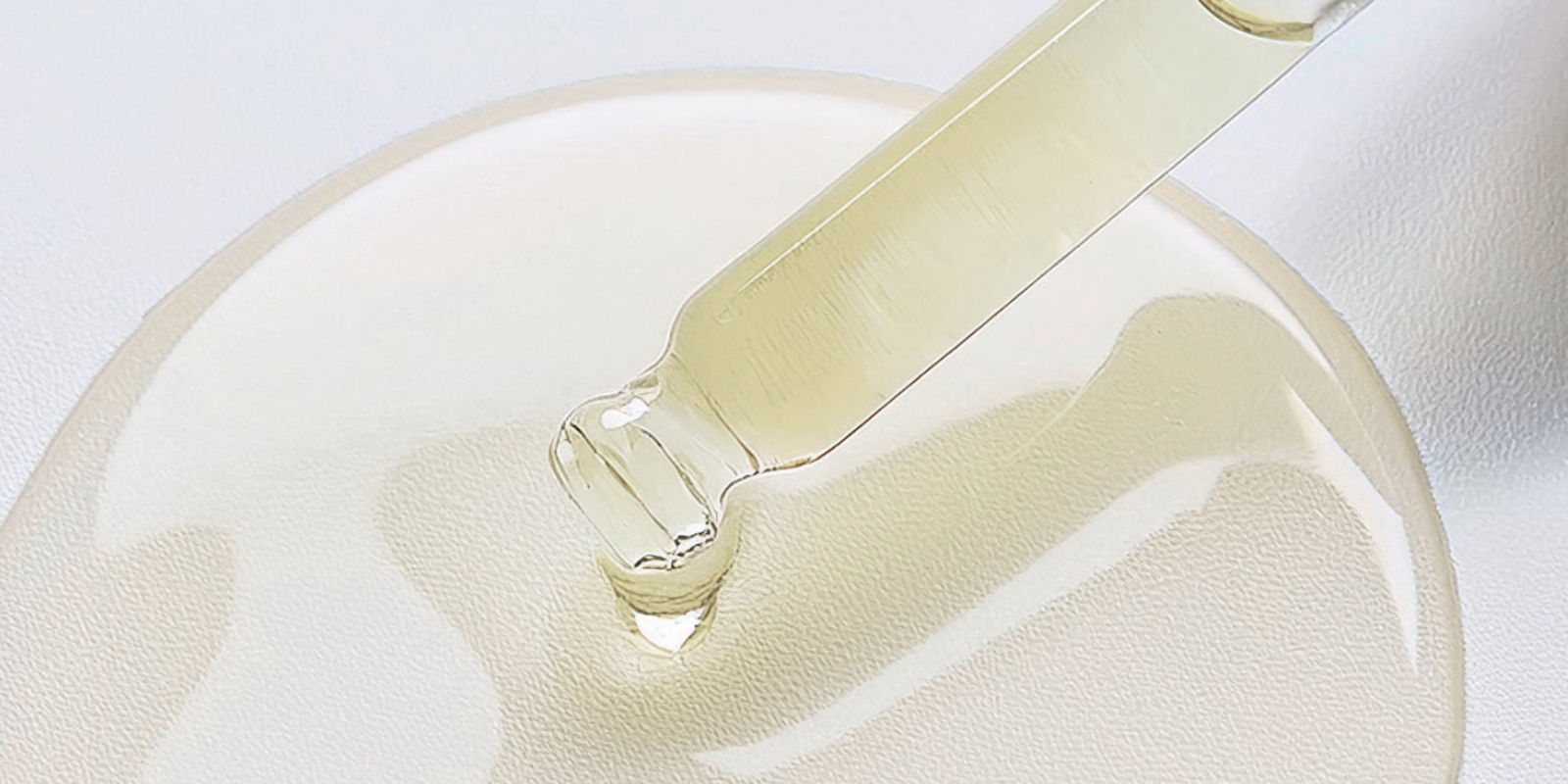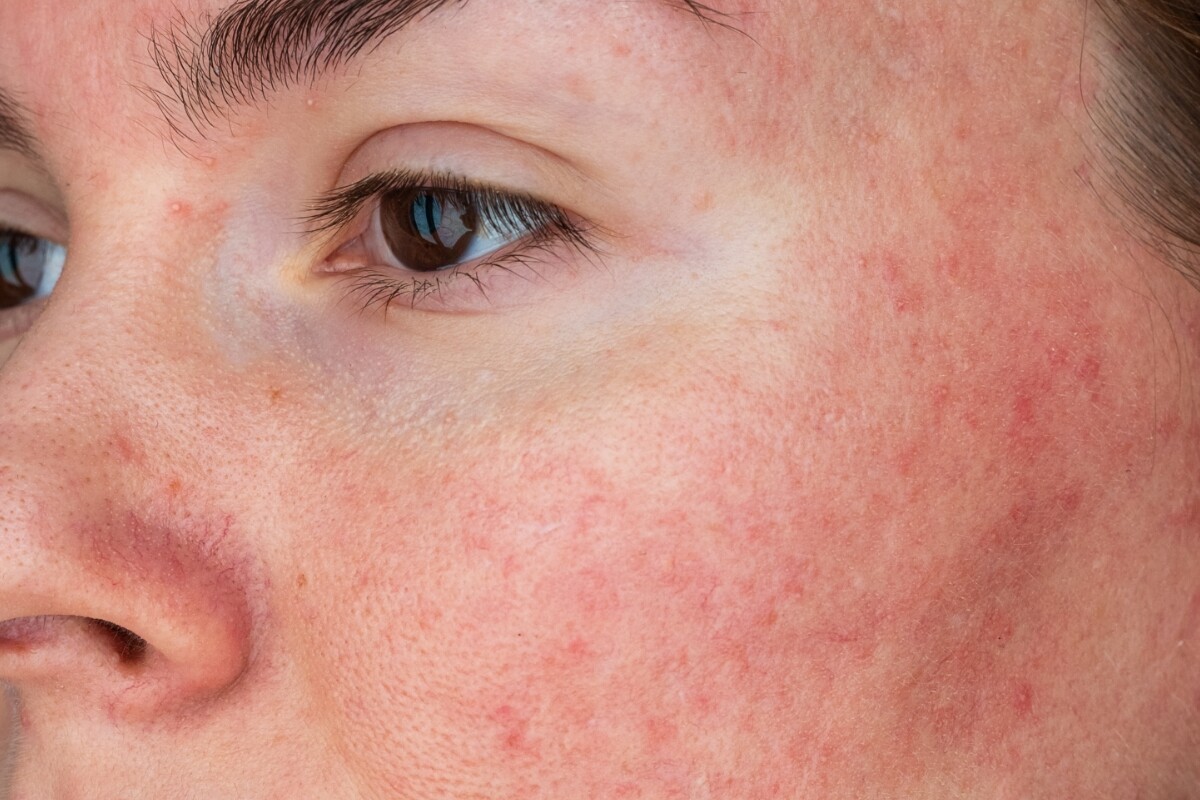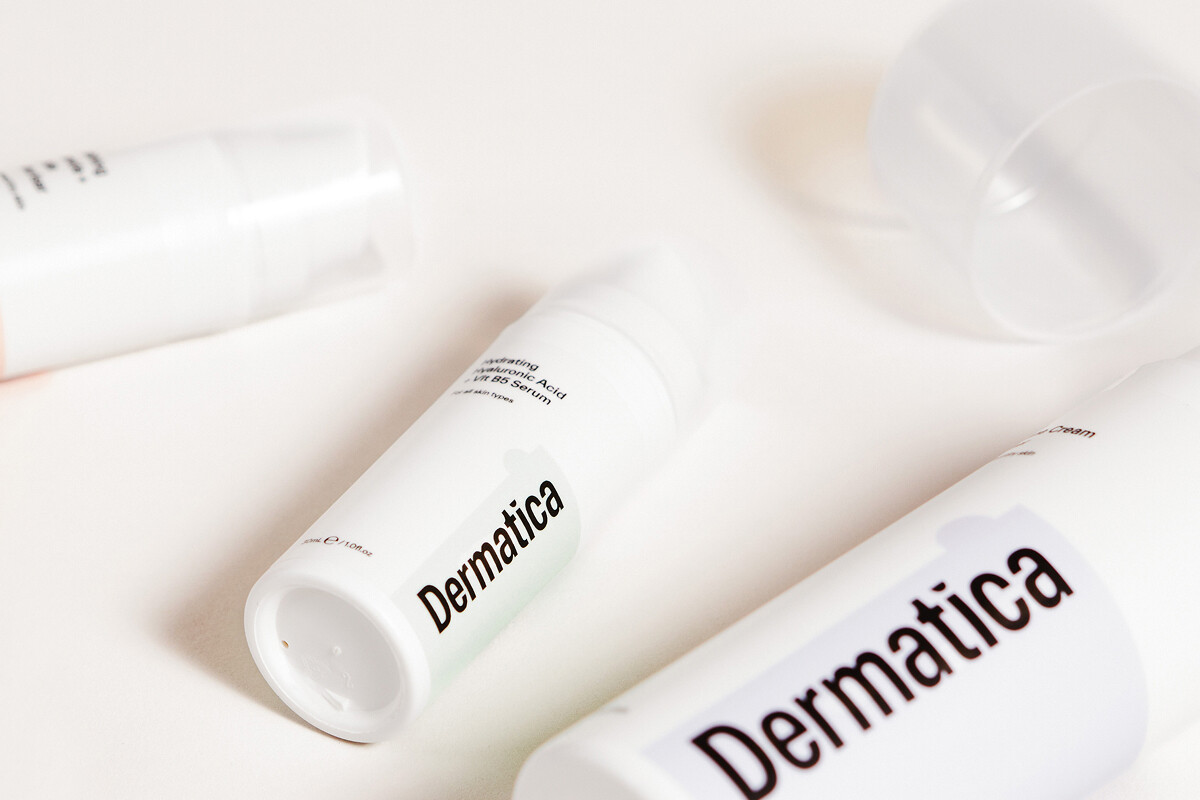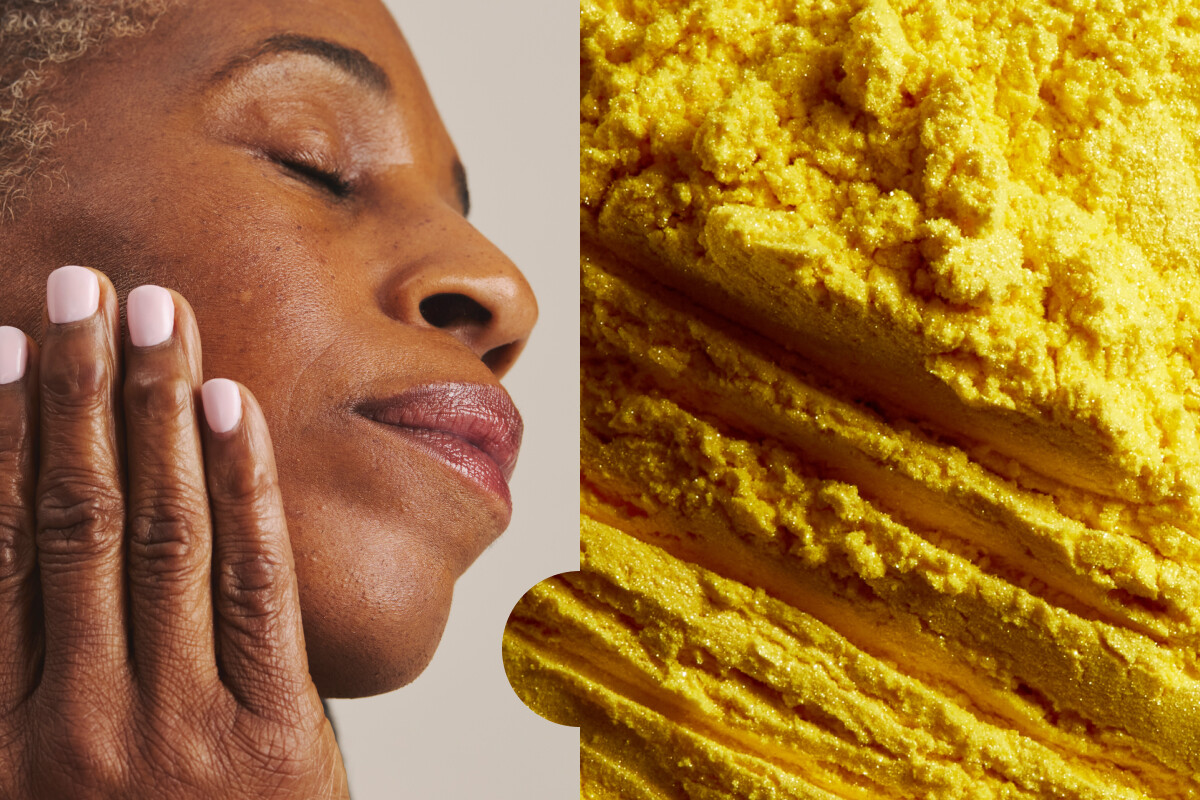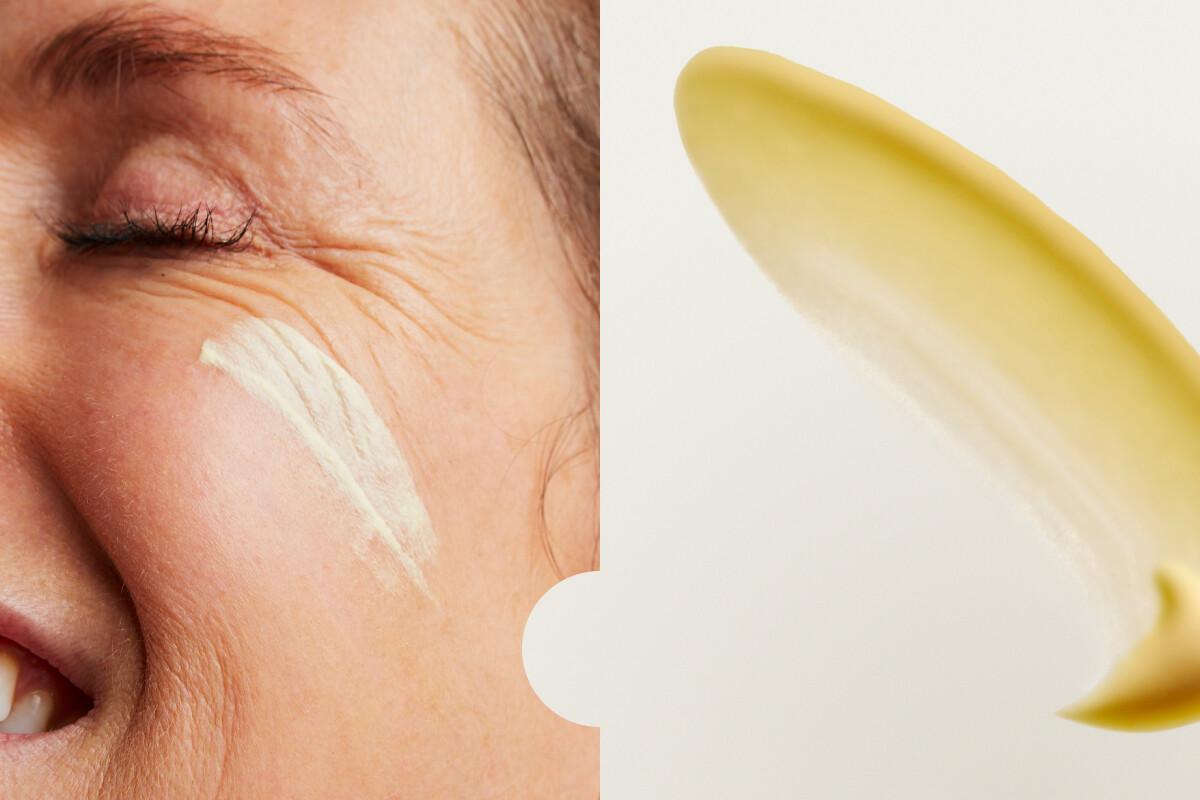Alpha Hydroxy Acids (AHAs): Types, Benefits & How To Use Them
If you’re searching for AHAs, then glycolic acid, lactic acid, or mandelic acid has probably entered your skincare orbit recently. If not, they will very soon – as they are among the most popular exfoliating acids in skincare.
Today we’re looking at AHAs, or alpha-hydroxy acids, and explaining the different types. When used correctly, each one brings its own unique benefits to the skin. So, whether you’re new to skincare, or you’re stuck on which product to choose, our team is here to help you make the best choice for your skin.
Read on for our in-depth, evidence-based guide on all things AHA.
Alpha-Hydroxy Acids (AHAs), Explained
Alpha-hydroxy acids (AHAs) are acids used in a variety of skincare products. They’re sourced from plants, animals or they can be man-made in a laboratory. AHA skincare is mainly found in skin brightening or anti-ageing products, such as serums, moisturisers, and toners.
Types of AHAs
There are many different types of AHAs. These are the most commonly used ones in at-home skincare products.
– Glycolic acid (from sugar cane or man made)
– Lactic acid (from lactose or other carbohydrates)
– Mandelic acid (from bitter almonds)
– Malic acid (from fruits)
What do AHAs do to skin?
Alpha hydroxy acids (AHAs) help shed dead skin cells on the very surface of your skin (called the stratum corneum).
They work by “ungluing” the bonds that hold these dead cells together. This gently releases them, to reveal a fresher, smoother, and brighter skin tone beneath. [1]
Benefits of AHAs in Skincare
Exfoliation
Everyone’s skin naturally exfoliates by itself – this is called the skin cell turnover process, and on average one cycle (the process of shedding old skin cells and replacing them with new ones) takes around one month. [2]
For many of us, however, this cell turnover process can seem quite sluggish as we get older. Dead skin cells can collect or stick to the skin surface for longer than we need. If this happens to you, exfoliating acids like AHAs can lend a gentle hand. [3]
An Alternative to Mechanical Exfoliators
Using low-strength AHAs at home is often safer than exfoliating with facial brushes or scrubs. These mechanical exfoliators can cause small cuts in the delicate skin barrier or cause irritation. Especially if you have dry or sensitive skin, or use other actives in your routine like retinoids.
Fades Dark Spots, Pigmentation & Discolouration
AHAs can help treat dark spots – including age spots, sun damage, melasma and pigmentation from acne. Dark spots form because the skin cells have built up excess melanin. By removing the outer dead layer of skin, consistent use of AHAs can help speed up the production of new skin cells, resulting in a smoother, more even skin tone. [4]
For pigmentation conditions like melasma, prescription treatments typically contain hydroquinone or tretinoin. As these ingredients are up to 20x stronger than over the counter skincare, they are only available on prescription. If you can’t access a prescription – or you’re taking a break from hydroquinone, pregnant or breastfeeding, or your pigmentation symptoms are mild – AHAs might be a good alternative for you to try.
Brightening
When AHAs break down the dead skin cells, the new skin beneath appears brighter and more radiant. [4]
Clearing up this build-up also helps other skincare and makeup products work better too. Brightening ingredients like Vitamin C or tranexamic acid can penetrate the skin better, allowing them to work more effectively. Fewer dry or uneven skin patches allows makeup to apply more smoothly, too (if you use it). [5]
Promotes Collagen Production
What’s more, some – including glycolic acid – AHAs can help speed up collagen production in the skin.
Using AHAs like glycolic acid consistently can stimulate fibroblasts to work harder and produce more collagen – preventing and smoothing signs of ageing. [6]
Fibroblast cells are like collagen factories, creating collagen and elastin proteins deep below the surface of the skin. We need both collagen and elastin to build, repair, and give structure to our skin. But as we reach our mid to late twenties, the fibroblasts in our skin slow down – making less collagen than when we were younger. Without as much structure to our skin, visible wrinkles, dark spots, and thinner or sagging skin appear – so retaining collagen through science-backed skincare, daily sunscreen and healthy lifestyle choices will help maintain healthy, youthful-looking skin for longer. [7]
Treating Acne & Acne Scars
Acne can be painful, persistent and difficult to manage for many people. While ingredients like adapalene or oral antibiotics may be a more effective first-line treatment for more moderate-to-severe acne symptoms, they may only be available with a prescription.
If you can’t get a prescription, AHAs can help gently exfoliate the skin – clearing away dead skin cells that may otherwise get trapped in clogged pores. [1]
By sloughing away these dead skin cells, AHAs can also help improve the appearance of acne scars and uneven skin texture too, giving the skin a smoother appearance. [5]
If you’re using a personalised formula from Dermatica, or any topical prescription for acne, make sure your skin tolerates that treatment first before trying more actives, such as AHAs.
Safety Precautions Before Trying AHAs: Our Dermatologist’s Advice
Before we tell you how to choose an AHA product – some professional advice.
“Exfoliating acids are now extremely popular. However, the lack of proper guidance around these products has left many dealing with skin reactions and inflammation. When used correctly, AHAs can benefit almost all skin types – but misusing them can damage your skin barrier. The key to success? Follow these steps.
First, do a patch test on a small area of skin
If your skin is fine, start using an AHA 1-2 times a week
Keep an eye on your skin. If you sense any irritation, stop using it. Wait for your skin to return to normal before trying it again.
Do not use your personalised formula, or other strong active ingredients, at the same time as your AHA. This can overexfoliate your skin barrier.
Over-exfoliating can quickly lead to skin inflammation triggering sensitivity and oxidative stress, which can worsen pigmentation and speed up premature skin ageing. So, go slow – less is more.”
– Dr. Shendy Engelina, Consultant Dermatologist at Dermatica
Potential Side Effects of AHAs
Irritation, Sensitivity & Allergic Reactions
AHAs in most cosmetic skincare are generally safe.
However, some people may experience skin irritation, redness, or peeling especially when using higher concentrations or combining AHAs with other treatments. It’s so important to follow the instructions carefully. Remember to ask your qualified dermatology provider for advice if you’re using other treatments in your routine. [4]
High concentrations AHA designed for peels are much stronger than at-home skincare products. The amount of AHA in them can vary, and depend on whether they are superficial, moderate or deep. An acid peel must be applied by a licensed, experienced professional in their clinic – such as a dermatologist. Peels should be used less often to reduce your risk of side effects. [9]
Sensitivity to Sun Exposure
AHAs make your skin more sensitive to UV light, which can lead to sunburn, or worsening of acne, ageing or pigmentation concerns.
To avoid a reaction, make sure you wear broad-spectrum sunscreen with a high SPF (at least SPF30+) every day, without fail. Avoid direct sunlight, and try to stay in the shade or wear protective clothing at the hottest or brightest times of the day. [10]
How to Add AHAs to Your Skincare Routine Safely
Should You Use AHAs or Beta Hydroxy Acids (BHAs)?
Another well-known exfoliating acid is beta-hydroxy acid (BHA). BHAs mostly come from one source: salicylic acid. It’s often added to acne-fighting products, and helps to exfoliate the skin and remove dead skin cells.
Clogged pores are most often caused by dead skin cells and oil that get trapped. While AHAs exfoliate the skin surface, BHAs activate deeper in the pores – helping to unclog blackheads and whiteheads.
AHAs can help alleviate acne symptoms, but may be better at targeting age-related or pigmentation concerns, while BHAs might be best for acne-prone skin. However, if you are already using adapalene or benzoyl peroxide, these should be used instead. They are more effective at reducing clogged pores and inflammation from acne than a BHA. [11]
Combining AHAs with Other Ingredients
If you’re using retinol or prescription retinoids, it’s even more important to choose lower concentration AHAs, as retinoids have an exfoliating effect already. Use your AHA in the morning before sunscreen, and your retinoid in the evening, to avoid overwhelming your skin.
Use your product once or twice a week, then gradually build up the frequency or strength if you need to.
Encapsulated Skincare
Choosing skincare with encapsulation technology is another way to minimise irritation to your skin. Encapsulation encases each individual AHA molecule in a protective sphere.
This protective layer melts away on contact with the skin, releasing the ingredient more slowly and gradually, and giving it time to penetrate deeper before activating. This helps prevent irritation on the skin surface. [12]
Read more about how to combine glycolic acid with retinol or other retinoids.
Whenever you use more than one skin treatment, always remember to follow a dermatologist’s advice and add them into your routine gradually. Subscribers who need personalised guidance can take advantage of our team’s expertise by asking unlimited questions from their dashboard.
Find out more about what formula is right for your skin by visiting our website.
References
1. Tang SC, Yang JH. Dual Effects of Alpha-Hydroxy Acids on the Skin. Molecules : A Journal of Synthetic Chemistry and Natural Product Chemistry [Internet]. 2018 Apr 10;23(4). Available from: https://www.ncbi.nlm.nih.gov/pmc/articles/PMC6017965/
2. Alberts B, Johnson A, Lewis J, Raff M, Roberts K, Walter P. Epidermis and Its Renewal by Stem Cells [Internet]. Nih.gov. Garland Science; 2015. Available from: https://www.ncbi.nlm.nih.gov/books/NBK26865/
3. Quan T. Human Skin Aging and the Anti-Aging Properties of Retinol. Biomolecules [Internet]. 2023 Nov 1;13(11):1614. Available from: https://www.mdpi.com/2218-273X/13/11/1614
4. Almeman AA. Evaluating the Efficacy and Safety of Alpha-Hydroxy Acids in Dermatological Practice: A Comprehensive Clinical and Legal Review. Clinical, Cosmetic and Investigational Dermatology [Internet]. 2024 Jul 16;17:1661–85. Available from: https://www.ncbi.nlm.nih.gov/pmc/articles/PMC11268769/
5. Karwal K, Mukovozov I. Topical AHA in Dermatology: Formulations, Mechanisms of Action, Efficacy, and Future Perspectives. Cosmetics [Internet]. 2023 Oct 1;10(5):131. Available from: https://www.mdpi.com/2079-9284/10/5/131
6. Narda M, Trullas C, Brown A, Piquero‐Casals J, Granger C, Fabbrocini G. Glycolic acid adjusted to pH 4 stimulates collagen production and epidermal renewal without affecting levels of proinflammatory TNF‐alpha in human skin explants. Journal of Cosmetic Dermatology. 2020 Jul 24;20(2):513–21.
7. Zhang J, Yu H, Man M, Hu L. Aging in the dermis: Fibroblast senescence and its significance. Aging Cell. 2023 Dec 1;23(2).
8. Chen L, Lu L, Tu S, Zhang T, Du X, Chen L, et al. Efficacy and safety of 5% glycolic acid‐based Gel essence in the treatment of mild to moderate acne. Journal of Cosmetic Dermatology. 2022 Feb 19;21(10):4482–9.
9. Samargandy S, Raggio BS. Skin Resurfacing Chemical Peels [Internet]. PubMed. Treasure Island (FL): StatPearls Publishing; 2020. Available from: https://www.ncbi.nlm.nih.gov/books/NBK547752/
10. Kaidbey K, Sutherland B, Bennett P, Wamer WG, Barton C, Dennis D, et al. Topical glycolic acid enhances photodamage by ultraviolet light. Photodermatology, Photoimmunology & Photomedicine. 2003 Feb;19(1):21–7.
11. Elçin Tören, Adnan Ahmed Mazari, Matej Buzgo. Exploring the efficacy of AHA–BHA infused nanofiber skin masks as a topical treatment for acne vulgaris. Journal of Applied Polymer Science. 2024 Feb 3;
12. Bukhari A, Fatima Z, Atta M, Nazir A, Alshawwa SZ, Alotaibi HF, et al. Poly Lactic-Co-Glycolic Acid Nano-Carriers for Encapsulation and Controlled Release of Hydrophobic Drug to Enhance the Bioavailability and Antimicrobial Properties. Dose-Response [Internet]. 2023 Jan;21(1). Available from: https://pmc.ncbi.nlm.nih.gov/articles/PMC9893093/

